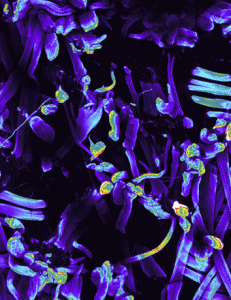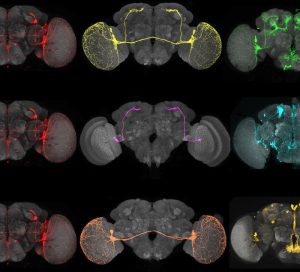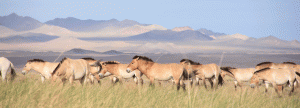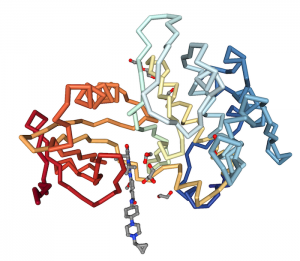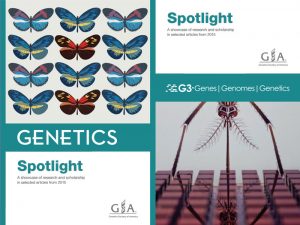Enter your address to receive notifications about new posts to your email.
Science & Publishing
-
Science & Publishing
Dog pedigrees shed light on recombination
Recombination within the genome isn’t random. This swapping of DNA segments between one chromosome and its homolog preferentially affects specific genome regions called hotspots. These regions can have recombination rates many times higher than other areas of the genome, and the rapid shuffling of genetic information is thought to be important in evolution. The location…
-
Science & Publishing
TAGC Videos & Meeting Report: The Allied Genetics Conference online!
The Allied Genetics Conference was an experiment for the GSA. We brought together under one roof seven separate research community meetings: C. elegans, ciliate, Drosophila, mouse, yeast, zebrafish, and population, evolutionary, and quantitative genetics. Today we are launching another experiment, this time, to communicate results presented at the meeting. Thanks to a generous grant from the…
-
Science & Publishing
Sex chromosome turnover in frogs hints at evolutionary patterns
Sex chromosomes have evolved from autosomes hundreds of times across the tree of life. In mammals, sex is controlled by the Y chromosome-linked gene SRY, which triggers the development of male anatomy. Sex determination in most mammals is extremely conserved; essentially all marsupials and placental mammals share the same pair of X and Y chromosomes…
-
Science & Publishing
Cold-loving fungi fight frostbite, but can’t take the heat
To the unaided eye, Antarctic soil and alpine glaciers may appear to be barren wastelands devoid of life. But some microbes call hostile habitats like these home. Research on one such organism, published in the latest issue of G3, reveals some of the mechanisms behind cold adaptation—and explains why these otherwise hardy creatures can’t survive…
-
Science & Publishing
Speed limits in bacterial factories
In the fast-paced life of a bacterium, the ability to manufacture proteins quickly and efficiently is crucial. In these organisms, mRNAs—the templates for building proteins—have a string of bases near the start called the Shine-Dalgarno (SD) sequence. This motif increases the rate at which translation is initiated. Some results suggest that the presence of SD…
-
Science & Publishing
High Temperatures Suppress Seizures in a Fruit Fly Epilepsy Model
The human brain is an amazing machine powered by electricity. Carefully controlled patterns of changing electrical charges in neurons allow us to to think, move, and speak. When this system is disrupted, very bad things happen. A seizure occurs when a sudden surge of electrical activity in the brain interrupts normal functioning. Seizures are accompanied…
-
Science & Publishing
November GENETICS Highlights
Check out the November issue of GENETICS by looking at the highlights or the full table of contents! ISSUE HIGHLIGHTS This Month’s Centennial Articles Charlesworth et al. on background selection and neutral diversity, pp. 829-832 Stephen I. Wright Associate Editor Stephen I. Wright introduces the 1993 GENETICS Classic by Charlesworth. This landmark article revealed an important effect structuring neutral…
-
Science & Publishing
New in G3: maize, master regulators, and mutagenesis
Check out the November issue of G3! Table of Contents Investigations Genomic Prediction of Single Crosses in the Early Stages of a Maize Hybrid Breeding Pipeline Dnyaneshwar C. Kadam, Sarah M. Potts, Martin O. Bohn, Alexander E. Lipka, and Aaron J. Lorenz G3 November 2016 6:3443-3453; Early Online September 19, 2016 doi:10.1534/g3.116.031286 Abstract | Full…
-
Science & Publishing
The Genetic History of Horses
Like any revolutionary technology, domestic horses changed human society. The incredible speed and strength of these animals opened up new opportunities to spread trade, language, and culture. For thousands of years, horses have been helping build human society by pulling wagons and plows and carrying soldiers and travelers on their backs. Horse husbandry changed humanity,…
-
Science & Publishing
Using yeast to expose cancer’s genetic vulnerabilities
Cancer profoundly scars the genome of an affected cell. Amplification and overexpression of chunks of DNA sequence are common—but it’s not always clear whether these changes are directly involved in the disease or byproducts of some other malfunction. Further complicating the search for treatments, many genes that are altered in cancer cells are involved in…
-
Science & Publishing
GSA Journals Spotlight 2015
The GSA Journals, GENETICS and G3: Genes|Genomes|Genetics, are proud to present our annual Spotlight booklets for research published in 2015. Each Spotlight is a showcase of the excellent research and scholarship published over the course of the year, along with a selection of striking images submitted by our authors. Browse the 2015 GENETICS Spotlight. Browse the 2015 G3 Spotlight. …




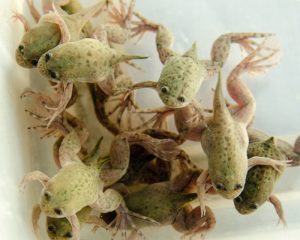
![By 23am.com (Antarctica Sailing Trip) [CC BY 2.0], via Wikimedia Commons.](https://s43361.pcdn.co/wp-content/uploads/2016/11/rsz_1antarctica_sailing_trip_pct283253678755pct29-300x201.jpg)
![By BMW Werk Leipzig (http://bmw-werk-leipzig.de) [CC BY-SA 2.0 de], via Wikimedia Commons](https://s43361.pcdn.co/wp-content/uploads/2016/11/rsz_bmw_leipzig_media_050719_download_karosseriebau_max-300x200.jpg)

